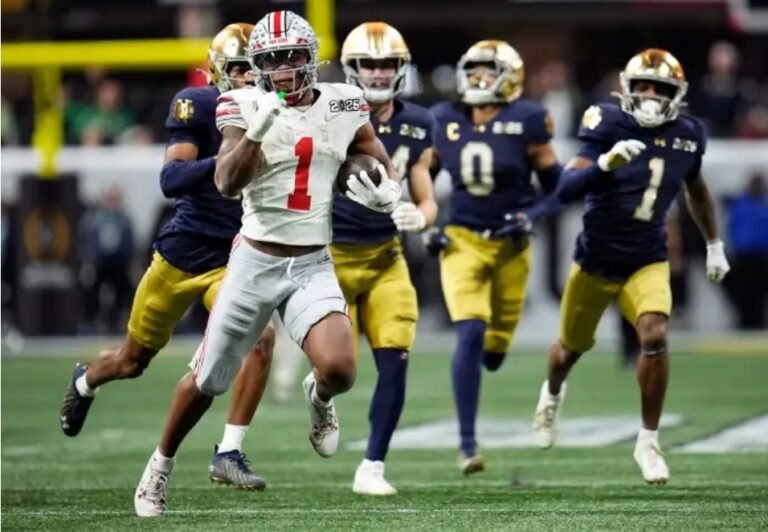Quinshon Judkins’ GPA at Ohio State Surfaces After Big Honor: A Controversial Look into College Athletics
When Quinshon Judkins, the dynamic running back from Ohio State, received the prestigious honor of being named a first-team All-American, it was a moment of celebration not just for him, but for the entire Buckeyes football program. Judkins had been instrumental in leading his team to a successful season, showcasing his exceptional skill on the field. However, in the aftermath of this recognition, a detail surfaced that has sparked controversy across social media and within the world of college athletics: his GPA.
Reports revealed that Judkins, despite his accolades and high performance on the field, was carrying a GPA significantly lower than what many would expect from a top student-athlete at one of the most prestigious universities in the country. The revelation has ignited debates on the balance between athletics and academics in college sports, with some questioning whether the academic achievements of athletes are truly being valued, or whether their education is merely a secondary concern behind their athletic prowess.
In a system where student-athletes are often pushed to their limits to perform on the field, some critics argue that Judkins’ GPA is indicative of a larger issue within college football programs. Are athletes being given enough support to succeed in the classroom, or are they being funneled through a system that prioritizes athletic success at the expense of their education?
On one hand, supporters of Judkins and the broader college sports model argue that athletes, especially those playing at a high level, face immense pressures. Between grueling practice schedules, travel commitments, and the expectation of high performance on game day, it’s understandable that their academic endeavors might take a backseat. In this view, a subpar GPA is merely a reflection of the system in which these athletes operate. After all, their primary role at universities is to entertain, not to necessarily excel in the classroom.
On the other hand, critics see Judkins’ GPA as a troubling sign of how college sports have evolved into a business where the athletes, though they are technically students, are often seen more as commodities. The rise of NIL deals has further complicated this issue, with athletes now receiving millions of dollars in endorsements while still being expected to maintain the appearance of being college students. Some argue that the increasing commercialization of college athletics is detrimental to the educational goals of the institutions they represent.
Judkins, for his part, has expressed gratitude for his time at Ohio State and has emphasized his commitment to both football and his academics. However, his GPA has become a lightning rod for those who believe that the academic integrity of college sports is being compromised. Should college athletes be held to the same academic standards as their non-athlete peers? Or is the reality that their commitment to their sport should be recognized as a form of education in itself?
As the controversy over Judkins’ GPA rages on, it highlights a growing concern within the world of college athletics: Are universities truly providing an educational experience for their athletes, or is the focus squarely on athletic performance, to the detriment of academic achievement? The question may not have an easy answer, but it’s a discussion that needs to be had, especially as college sports continue to evolve in ways that challenge traditional ideas about education and athletics.
In the end, Judkins’ academic performance may only be a snapshot of the larger issue within college sports, but it serves as a reminder that the balance between athletics and academics remains a precarious one for many student-athletes at the highest levels of competition.
